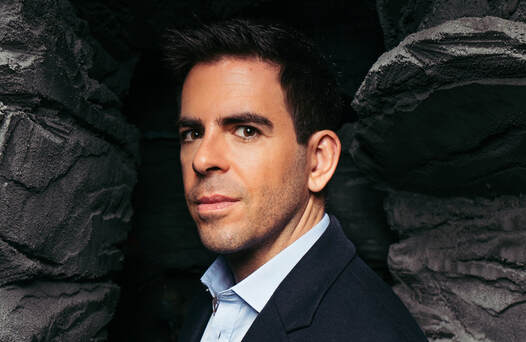Written by John Edward Betancourt  Caution: This article contains spoilers for Episode 203 of ‘Eli Roth’s History of Horror’. It has often been said, that our bodies are in fact, temples, and that we should worship them accordingly and there is a lot of merit to that particular phrase and line of thinking. After all, our bodies and all the delicate and important organs inside of them are critical to our survival, and neglecting them and causing them harm, results in nothing but catastrophic trouble for us. Which is why we try, for the most part, to eat right and take care of them so that we never run into health issues with our bodies that we could have prevented. Which in essence means… we do harbor some fears in regard to the health and sanctity of our temples, the kind that are so deep rooted and troubling, that horror films are eager to pounce upon them and place them directly in the spotlight. In fact, body related horror films are so frightening and so impactful that they have their own rich history, to the point where they became the focus of this week’s episode of Eli Roth’s History of Horror, and well… what we learned about ‘Body Horror’ in this particular tale was supremely disturbing to say the least. Since this sub-genre is designed to tug at some deep-rooted fears, the kind that tend to wait for us in our nightmares. But before we examine the more unsettling aspects of these films, it is important to recognize that some of these stories aren’t as disturbing as their counterparts, since they have some important lessons to send our way, such as Clive Barker’s Hellraiser. For this particular tale goes beyond its gore and unsettling visuals to teach the audience an important lesson on obsession and how it can destroy us and consume us when we focus upon it and nothing more, as evidenced by Frank’s horrific journey in this tale. Which is quite the refreshing message to find in a body horror tale, when one considers the dark places that other ones go. For films like Audition and Society hold nothing back in exploring the darkness of man, something they accomplish by injecting the age-old twist of ‘looks can be deceiving’ into their stories. Since the villains in both films appear to be everyday folks. But it doesn’t take long for these innocent or vapid people, respectively, to reveal to the audience that are in fact, horrific monsters. The kind that love to prey upon the innocent or the unjust and rip them to shreds in the most disturbing manner possible, of course, and really what makes these films so supremely horrific; are their lack of respect for the human body. For both movies treat flesh as toys and that leads to some supremely disgusting and bone chilling moments for certain, the kind that stay with you for ages on end since we genuinely expect our fellow man to have a little more respect for the vessel that sustains us. But truly, what makes body horror such a powerful sub-genre, is that it preys upon one of our most primal fears; the fact that we are terrified of losing control of our bodies. For we really do enjoy being able to run when we want or rest when we want and everything in between. So, when we are told that our bodies are corrupted with illness or are rejecting our commands because of something we cannot control, pure terror settles in and that’s precisely what movies such as Cabin Fever and pretty much everything David Cronenberg has ever made, take the time to explore. Granted Cabin Fever also explores the ills of man, but in the subtext of the film, it too relates to our overall fears of losing control. But undeniably, Cronenberg is the master of this sub-genre, since his movies are able to not only pluck at that terror on a primal level, but they put the flaws and the weaknesses of our bodies on full display, leaving us feeling vulnerable as we watch and that is quite the accomplishment. In the end however, this really was perhaps the most unsettling episode of this series to date, since it really did expose how much the fears we’ve outlined here, actually rattle us to our core. But that’s not a bad thing by any means. For horror and documentaries like this are designed to help us to face our fears and deconstruct them and hearing more about what people have taken away from these films and their experiences in putting them together, is healthy for certain. For now, we can approach these movies with an open mind, one that prompts us to examine the root cause of our fear, and that makes these types of stories as impactful and as influential as any other in the genre. But all unsettling visuals aside, this episode was in fact, quite good. For it really did teach us some incredible lessons about a sub-genre of horror that isn’t discussed enough and that definitely leaves one eager to see what other explorations await us as we continue our grand journey through the rich history of horror. Until next time.
0 Comments
Leave a Reply. |
Archives
April 2025
|
|
© 2012-2025, Nerds That Geek LLC.
All Rights Reserved. |
uWeb Hosting by FatCow

 RSS Feed
RSS Feed
